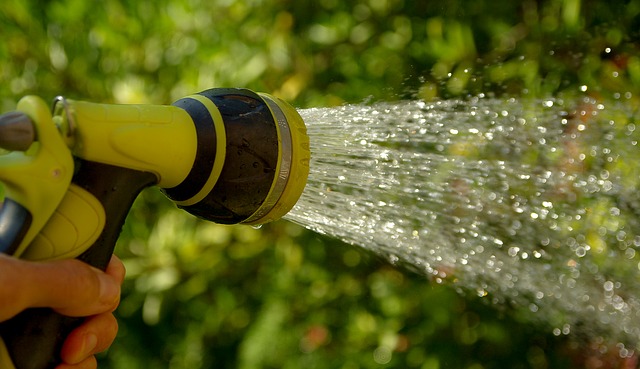
Think about the last time you were severely dehydrated. You probably felt sluggish. Maybe you also had a pounding headache. Overall, it’s not a fun experience. A garden probably feels the same way when it lacks water. Like humans, plants need H2O to survive and can’t live long without hydration.
Over the years, I’ve learned a thing or two about best watering practices, but I’ve also managed to create my own routine. I know some gardeners who prefer to irrigate their beds. Others prefer to use sprinkler systems. The watering method you choose is entirely up to you.
I use a hose with multiple nozzle settings and use a gentle spray to water my vegetable plants. I like the multi-function nozzle because I can use it for other outdoor tasks (like bathing my dogs, which they hate with a passion!). My hose is expandable and ultra-long, so I can reach every area of my garden without struggling or hauling around a bulky accessory.
It’s important to me that I water carefully and considerately to prevent waste. Water is a precious resource, after all.
Here are a few tips to keep your thirsty plants happy while avoiding waste:
- Water in the early morning or late evening. It’s incredibly pointless to water once the sun is high up in the sky. The strong rays will quickly evaporate lingering moisture on the topsoil and you run the risk of burning foliage. Little droplets that sit on leaves turn into magnifying glasses that will intensify the sun’s heat and damage plants. It’s also just a lot more pleasant to water when the temperatures are bearable, and the sun isn’t beating down on you. Your city may also have special rules about watering times. Watering outside of those hours (usually morning and evening) can get you into trouble.
- Water from below. Getting leaves wet won’t always cause problems, but you increase the risk of disease occurrence and pest activity. Water from below is also more effective since plants typically draw moisture via their roots.
- Mulch. Mulch. Mulch. Heavy mulching has been a game changer for me. For a long time, I struggled to keep my plants well watered. The topsoil would dry out rapidly, and I’d be left with a desiccated wasteland. When I started mulching around the base of my plants, I discovered that I could conserve moisture, water less frequently, and keep my plants happy. Now, I’m never without mulch on hand. I typically use straw, wood chips, or coco coir to mulch my plants.
- Check in with Mother Nature. Check the weather forecast and keep track of how much it has rained. It’s entirely unnecessary to water your garden if there was a rainstorm the night prior. We’re having a rainy summer this year, and I’ve been carefully monitoring the forecast to ensure I don’t double water for no reason. Letting Mother Nature do the work gives me a nice break once in a while, too.
Have you added mulch to your garden? If you haven’t, I guarantee that this step will change your frugal gardening life! It’s well worth the initial effort. Don’t forget to check the weather for this week and plan your watering schedule accordingly.

Steph Coelho is a freelance writer gardening in zone 5b. She is a certified Square Foot Gardener and has taught various garden-related workshops. When she’s not digging in the dirt or writing, she’s cooking up fresh produce, running, or listening to her favorite podcasts.
Leave a Reply